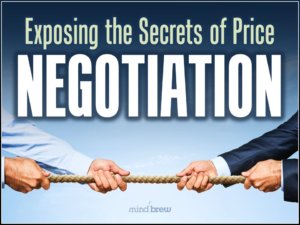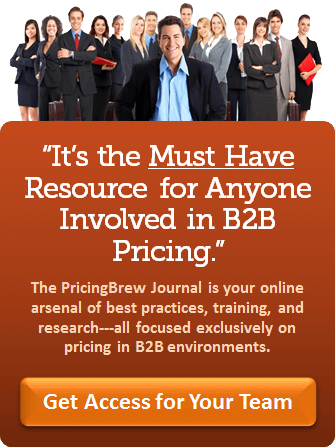For pricing groups and bid desks of any size, discernment in choosing which bids, proposals, and quotes to pursue can mean the difference between a blowout quarter and a frustrating slog to get anywhere near the goal. The reality is that not all bids are created equal, and the ability to identify and eliminate the “loser” bids early on is a capability that can generate significant benefits.
By “loser” bids, of course I’m referring to proposals and quotes where your chances of winning are slim-to-none, or those that aren’t a good fit for your company’s strategic goals and capabilities.
Contrary to popular belief, there are serious downsides to engaging with these losers. Consider the hours spent on analyzing, drafting, and tailoring each proposal or bid. Think about the opportunity costs associated with not being able to focus all of your resources on the most promising opportunities. And then there’s the effect on morale, as your teams get their hopes up again and again, only to fail over and over.
In truth, the cumulative costs of these loser bids can be substantial!
So how do we spot a loser bid? What are the telltale signs of a proposal we should avoid? How can we identify a quote that shouldn’t warrant a response? There are several red flags that should immediately put sales operations on alert:
- The Request for Proposal (RFP) is a poor fit for your company’s offerings or strengths, or your company lacks a clear competitive advantage or unique selling proposition for the bid.
- The Request for Quote (RFQ) is for a customer that has historically shown favoritism towards another vendor, suggesting that you may just be a “foil” to help wring more concessions out of the incumbent vendor.
- The request arrives at the last minute, suggesting that you may just be “column fodder” to fill out a procurement requirement for a certain number of bids, rather than a serious contender.
- The potential deal size, from a revenue and profit contribution perspective, does not justify the effort required to prepare a high-quality response.
To sidestep these wasteful and demoralizing exercises in futility, some teams have implemented a scoring system for inbound RFPs and RFQs. This approach involves evaluating each request against a set of predetermined criteria to assess its potential for success before investing any more time, energy, or hope in developing a robust response.
In most cases, historical data is analyzed to identify specific attributes and criteria that correlate most closely with past wins and losses. These attributes and criteria are then used to build a scoring model, which might include factors such as:
- The magnitude of estimated revenue and profit contribution.
- The alignment of the RFP with the company’s core competencies.
- Access to the decision makers and their level of engagement.
- The presence of a long-time incumbent or preferred vendor.
- The composition of the project relative to past successful projects.
- The company’s existing relationship with the prospect.
- The time-frame for when a response is expected or required.
Each factor is weighted according to its impact or influence on the likely outcome…positive or negative…and incoming RFPs are scored accordingly. A minimum threshold score is established, below which no further investment or effort will be made in responding.
By adopting a more selective approach and focusing on the most winnable and strategic proposals, leading teams have gained several advantages and benefits:
- Increased Win Rates—By concentrating efforts on bids with more potential and higher probabilities, teams naturally see an increase in close rates.
- Resource Optimization—Resources are directed where they are most likely to produce results, generating higher returns on those investments.
- Enhanced Morale—Bid Desk and Sales teams feel more empowered and motivated when working on proposals with a realistic chance of success.
- Strategic Alignment—Focusing on well-suited RFPs ensures that the business stays true to its strategic objectives and strengths.
The bottom line is that a “one-size-fits-all” and “every-deal-is-worth-pursuing” approach to handling RFPs and RFQs is a guaranteed drain on your team’s overall efficiency and effectiveness.
On the other hand, by implementing even just a simple scoring system to sidestep the most costly “loser” bids and time-wasters, commercial teams can improve productivity, boost performance, and enhance morale…all at the same time…by investing their energy where it really counts…and only where it really counts.
















